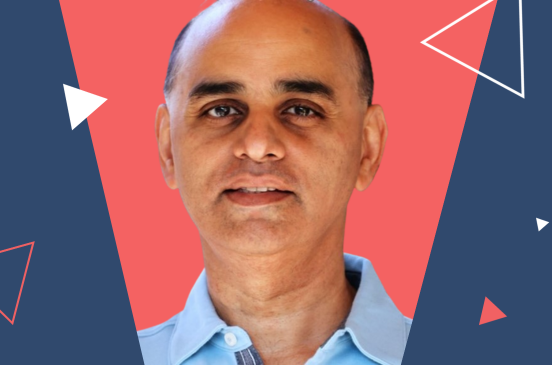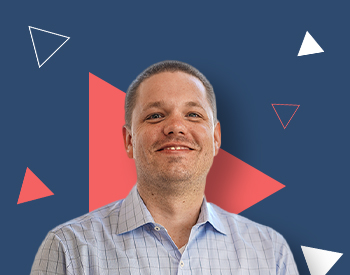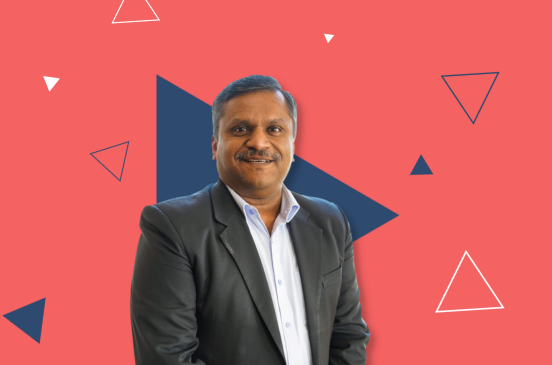Personas behind the Brand
Today’s featured leader: Solange Jacob
Hello and a warm welcome back to our insightful and informative leadership blog series, ‘Personas behind the brand’. In our latest edition, we take great pleasure in featuring Solange Jacob, Director of Customer Experience (CX), Innovation and Culture at Onix.
Solange is a dynamic and perceptive leader who has been at Onix for over 10 years, and is passionate about expanding the Change Management and Transformation space. A seasoned professional in project management consulting, Solange has seamlessly navigated the realms of the public sector, non-profits, and corporate spheres, spanning IT, healthcare, social services, retail, and cloud computing. She has a comprehensive grasp of Project Management, Operations, Finance, and PMO protocols, with technical adeptness in Microsoft and Cloud programs.
Solange is passionate about Civil Rights and Social Action, Health, Human Rights, Poverty Alleviation, and Social Services. She was formerly Vice President of Leo’s Club St Augustine Trinidad and Tobago, where she worked as a social services volunteer with young people.
Q. As the Director of CX, Innovation, and Culture, please share some of the strategies and initiatives you have implemented to enhance the overall customer experience at Onix.
In Change Management, everything begins with strong Sponsorship, and some of the most impactful strategies you can implement occur upfront in our planning phase. We prepare an Early Adopter group of influential employee voices, to act as champions for their departments as the company to transitions to new technology. This helps reduce support calls to the helpdesk as this peer-to-peer assistance handles the quick how-to questions. Our customers’ reduction in business disruption is always the aim of a great Change Management plan.
Q. How do you incorporate the principles of change management into your work to drive successful organizational transformations?
Change Management is an instrumental and usually overlooked necessity to successful projects and programs. The main principles of change management methodologies are:
- Awareness of the change – effective communication to those affected.
- Understanding why the change is occurring which ensures adoption and reduces resistance to that change.
- Knowledge on how to use the new technology which eliminates the fear of change through adequate training.
- Ability to use the technology solidifies the way of working for impacted teams so that processes can be re-invented to be more productive, efficient and fast — increasing adoption of the new tools.
- Reinforcement to the point when this new change is normalized and no longer disruptive to workflow.
By following the above principles and ensuring your organization has a strong People Leader Sponsor Plan and Champion Program to bring awareness, a comprehensive communication plan with an elevator pitch to help with buy-in, a training plan that provides the ability to use the new technology, and a transformation plan to ensure the new tools are being implemented as part of the way work happens, successful organizational transformations are guaranteed.
Q. Discuss a time when you successfully led a project that resulted in a significant improvement in customer satisfaction.
I have led numerous deployments over the years but one that stands out was a project I completed with a manufacturing client. We were tasked at helping the 150 + year old global company transition and fully adopt their Google Workspace platform which they had been on for approximately 5 years. They wanted to reduce their redundant legacy tool license costs and aimed to reduce their IT spend. I project-managed the initiative and was dedicated solely to this client for 6 months where we worked with their regions to reduce their Microsoft office spend. The complexity of this type of decommissioning project included multiple time zones, different license vendors, and further training to ensure there was minimal business disruption once this change was made. We strategized and implemented a full Change Management plan which included communication plans for every region in multiple languages, training plans that encompassed a multiple timezone and language approach, and transformation plans that included application development projects to ensure we accounted for some very large use cases across the company that relied on legacy tools. We had a strong Sponsorship plan that included a global council of executive representatives for every region, individual champion team members in every region who acted as Early Adopters and had their redundant tools removed first who could help support their peers, and we had strong directive and agreement from Execs on the removal approach that became tied to the Execs and their direct reports OKRs for the reduction in IT spend. We were able to reduce their legacy footprint by 83% – completing the project in 9 months.This project increased our customer’s satisfaction as they accomplished the cost savings necessary to keep their business running at its most efficient.
Q. As the Director of Culture, how do you ensure that the company’s values and beliefs are effectively communicated and embraced by employees? Please share some examples of how you’ve nurtured a positive and inclusive work environment.
After Onix went fully remote, my team took on a project to increase connection across the company. We implemented an internal intranet – Connect – giving employees a space to communicate with one another in a fun environment. This platform allowed us to share information about the happenings around the company, personal lives and mutual interest groups.The cloud based space immediately solved for the challenges of employees feeling disconnected based on the remote nature of the last couple years in the pandemic. Onix culture has a legacy of being rich in employee engagement, collaboration, recognition and appreciation. We are a company where employees are more than a number and true relationships are built on teams and within departments.
Q. How do you measure and track the success of your customer experience initiatives? Can you discuss any key performance indicators (KPIs) or metrics you use to evaluate the impact of your efforts?
Measuring and tracking KPIs is very important in the Change Management realm. During our planning stages, we identify metrics that are important to our client and ensure we understand the baseline of these metrics – ranging from communications to training as well adoption metrics.
KPI use cases include:
- Usage of new tools – understanding traction and attendance to trainings factoring in working locations (geographically or whether they’re at a desk or in the field)
- Communications – are employees reading and understanding materials, is the format digestible? We measure email open and click-thru rates and reactions received on messages sent in Slack.
- Technical stats of the project can include usage, log-in metrics, collaboration and usage frequency of the new tools.
Q. As the Director of CX, how do you ensure that customer feedback is effectively captured and used to drive continuous improvement? Can you tell us about any specific actions you’ve taken based on customer insights?
Customer feedback on our teams, tools and processes is vital to how Onix remains innovative. We strive to maintain a CSAT score above 90% successfully over the past ten years. Absorbing and making changes based on customer feedback is a daily practice here at Onix. We maintain and send out customer surveys pre- and post-deployment to our customers to understand how our delivery teams have performed. We also implement regular touchpoints with our customers’ employees during different phases of our projects through townhalls (in-person and live webinar), polls, surveys, and feedback loops. We want to ensure that the Change Management strategies enlisted are working for the culture of the organization. By remaining agile and curious we are able to meet most of our customers’ satisfaction ratings. In a recent example we took feedback on the tempo of a training course to adjust for easier digestion of the content which led to improvement of our overall course delivery.
Q. Discuss the role you think technology plays in driving innovation and change management within organizations. How do you incorporate technological advancements into your project management approach?
Technology is always advancing with the aim to achieve more, be better, and allow for more efficiencies, and because of this it underlies that one constant in life, which is: “change is inevitable”. And if change is inevitable, and technology will always be improved, it stands to reason that consumers and businesses alike must continue to think about how to keep up with those changes by constantly innovating their own way of living and working. Here at Onix, the nature of our work is technology and our main partners – like Google – are some of the world’s leading innovators in regards to technological advancements. Because of this we are regularly adjusting, learning, adapting and transforming our internal processes with changes to technology. Including using AI to help us get better at forecasting resources on projects and using chatbots to assist our teams to provide real time support in multiple languages and timezones. We use technology like Appsheet which is a no-to-low-code app maker to track metrics and project status reports. Because change is inevitable, change management will always be required wherever information needs to be disseminated, training needs to be provided and processes and the way we work needs to be revalidated and re-engineered for improvement.
Q. Tell us about a book, movie, or piece of art that has had a profound impact on you, and explain why it resonated with you.
My favorite book to date remains “The Alchemist” by Brazilian author Paulo Coelho. There are so many tidbits of knowledge and magic that resonate in almost every other page in that novel. “The Alchemist” is a timeless and captivating tale that encourages introspection, self-discovery, and the pursuit of one’s dreams, inspiring readers to embrace their own Personal Legend and find meaning in their lives.
Throughout the journey the hero faces numerous challenges and tests, all of which help him develop spiritually and grow as a person. Through these experiences, he learns valuable lessons about perseverance, faith, and the power of the mind to shape reality. And isn’t that the point of all of our journeys? We all leave what is most comfortable to learn more about ourselves. I found this novel as I was transitioning from high school to university abroad in a foreign country I had never visited before, and it helped me embark on a new adventure which has curated itself into my life.
Q. What would be the title of your autobiography and why?
Drawing inspiration off of an art piece / quote hanging in my office wall, my autobiography probably would be titled: “She believed SHE could, so she DID.” When I tell personal stories about my journey from being a young girl who grew up predominantly on a small island (Trinidad and Tobago) in the sun in the Caribbean, to being a young woman who has travelled all over the world and currently lives in one of the world’s largest metropolitan cities (Toronto) living out a lifestyle she only could have dreamed of back then, many people always ask – HOW? I believe everything I have accomplished in my life circulates around the strong foundation set by my Trinidadian parents and my belief in myself to manifest the life I wanted. I have always been ambitious, and despite being more reserved and risk adverse in my younger years, I have set out to achieve all that I have wanted over the years – changing into someone who is spontaneous and adventurous. As I continue my journey a “global citizen of the world” with my “mixed up” accent, I still believe I CAN and so I DO!
As always, we’ve enjoyed bringing you the latest views and industry perspectives from our Onix luminaries. We have lots more exciting stuff coming up, so keep tuning in and stay informed and updated with Onix.









